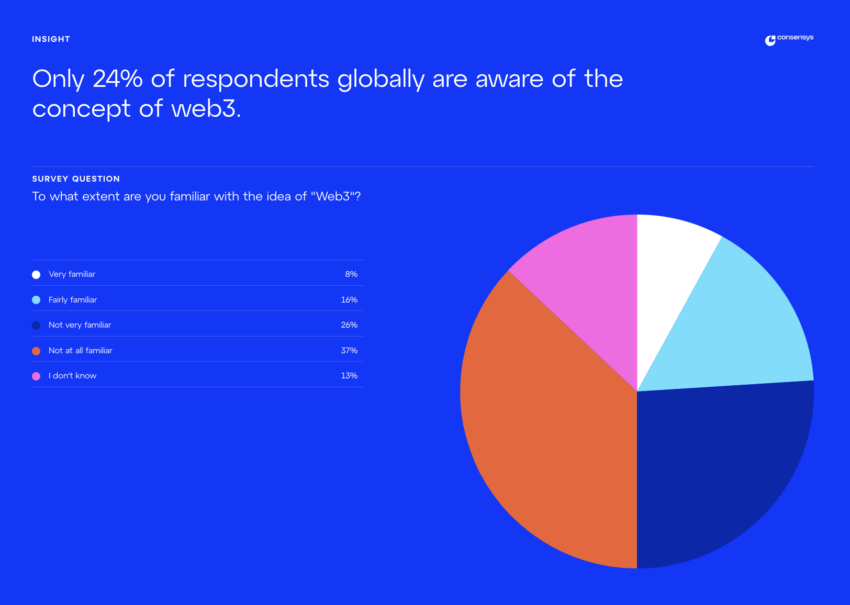What is web 2.5, and why is it a necessary addition to the internet?
Building a web3 wallet for web2 users: web 2.5 wallets
Examples of web 2.5 wallets

The internet has gone through almost constant evolution since its inception only a few decades ago, but you can divide it into three distinct eras so far- web 1.0, web 2.0, and web 3.0. The first was a mere notion of what a worldwide network can build, and if the second is a pond the third is an ocean; you have a very hard time indeed going from one to the next. Here’s where the concept of a web 2.5 originated, to smoothen the transition.
However, web2 vs web3 are divided by very, very distinct characteristics, the core of which can be summarised as:
When you go from web2 to web3, you ride your bicycle too far out of a parent’s supervision. Training wheels can be a reassuring presence in the unknown waters, which is what web 2.5 can feel like.
Enough metaphors. Let’s get into everything there is to know about web 2.5.
Web 2.5 is a much needed successor to webs 1 and 2 and a predecessor to web 3.0. To understand its nuances, a walk through history is in order:
Web 3.0 is still emerging, developers in the process of testing new features and making them better. There’s a long way to go before it is deemed fit for the use of the common- non tech-savvy man. There are quite a few reasons for this:
The solution can only be a bridge for web2 vs web3. A platform that brings centralised support on blockchain-based applications so the average user can have a clean, simple interface akin to web2, one that abstracts away the complexities of the technology underneath.

Consensys, a blockchain software company, held a ‘global web3 perception survey’ in 15 countries across continents in 2023, and it turned out about 37% of the respondents did not know anything about web3, with another 26% not being super familiar with the term. With those numbers, how do you get users to try out the financial freedom of web3?
You build web 2.5 wallets.
Web 2.5 wallets, also known as custodial wallets, are a type of wallet that manages private keys on behalf of the user. This setup differs from decentralised wallets, where users are responsible for managing their private keys. Web 2.5 wallets aim to provide a user-friendly interface for interacting with web3 technologies, such as blockchain and cryptocurrencies, while maintaining the security and convenience of web2 platforms.
They often offer features like fiat-to-crypto conversions and easy withdrawals, making it simpler for users to engage with decentralised finance. However, it is crucial to remember that, as the saying goes, "not your keys, not your crypto," emphasising the importance of direct ownership and control over digital assets for security and financial autonomy.
Further, complete due diligence before trusting web 2.5 wallets, and preferably ensure the entity publishes proof of reserves.
To reiterate, the main purpose of web 2.5 wallets is mass crypto adoption. They are mostly used by brands, creators, and the media and entertainment sector to easily distribute NFTs and tokens to users and drive engagement and loyalty.
Some popular real-time use cases of web 2.5 wallets include ticketing with UTIX, loyalty and fan engagement through Fanprime, gaming with Sandbox, and music streaming via Audius. Let’s take a look at how they are revolutionising their respective industries.
UTIX is a blockchain-technology-based event ticketing platform designed to revolutionise the online ticketing industry by providing a seamless and secure experience for both event organisers (EOs) and customers.
The platform uses blockchain technology to address several key issues, including price gouging and ticket counterfeiting. It ensures the authenticity and security of tickets through smart contracts and non-fungible tokens (NFTs).
UTIX offers a native wallet system for both customers and EOs. When customers sign up, the platform automatically generates a UTIX Ticket NFT Wallet and a UTIX Loyalty Token Wallet. These wallets are used to manage and store tickets and loyalty tokens, respectively.
For EOs, the platform also generates a UTIX NFT Ticket Wallet and a UTIX Loyalty Token Wallet, allowing them to manage and distribute tickets and loyalty tokens for their events. EOs have complete control over each ticket's variables: price, release, refundability, and resellability, with minimum and maximum pricing options.
UTIX combines the best of Web 2 and Web 3 for event ticketing. Like Web 2 platforms, it's easy to use but uses blockchain for security and transparency, improving everyone's ticketing experience.
Fanprime is a fan engagement platform designed to reward online interactions and create loyalty programs for sports fans. The platform is built to enable the intuitive setup and launch of rewards and loyalty programs, allowing sports organisations to connect with their fans more personalised and engagingly.
Fanprime's loyalty fan wallet allows fans to earn tokens for their interactions across various touchpoints, such as social media, streaming platforms, and e-shops. These tokens can be redeemed for exclusive offers, experiences, and tokenised cards, which are NFTs reserved for superfans.
The platform's gamification features include XP, badges, tier progression, and leaderboards, which encourage fans to engage more with their favourite teams and artists. This approach helps sports organisations identify their best fans, increase direct-to-fan communication, and boost sponsorship and merchandising revenues.
The Sandbox is a virtual world where gamers create, own, and earn money from their experiences. It's like Minecraft but with real ownership of assets as NFTs. Players get rewards for helping out and adding to the game world. Since joining Ethereum in 2018, The Sandbox has become a big name in GameFi, focused on play-to-earn.
The wallet lets gamers earn money from their digital assets through the play-to-earn (P2E) model. Players receive rewards for participating in the ecosystem, which is a big deal in web 3 gaming. Plus, they can create, own, and profit from their NFTs, giving them real digital ownership and the ability to trade and sell their assets.
The Sandbox wallet bridges the gap between traditional Web 2 gaming and the emerging Web 3 ecosystem, making it easier for gamers to transition into the new landscape and take advantage of its opportunities.
Audius is a blockchain-powered music streaming service that aims to reform the music industry by giving artists more control and compensation for their work. The platform allows artists to upload their tracks and artwork without any criteria or voting process, making it accessible to all musicians, regardless of label affiliation.
This web3 streaming app supports native NFT displays on artist profiles, enabling artists to showcase their digital collectables and further monetise their work through these unique digital assets. This integration of NFTs into the platform enhances the overall music experience and provides artists with additional revenue streams.
Artists can upload their songs for free and benefit from Audius' token economy, which is driven by $AUDIO, artist tokens, and stablecoins. This token economy rewards artists in $AUDIO based on their popularity on the platform.
It also features a chart system that rewards top artists. This approach allows artists to maintain control over their work and receive fair compensation for their music, making Audius an attractive entry point for artists looking to test web3 music streaming services.
In conclusion, web 2.5 wallets are a crucial stepping stone as web 3.0 matures. As users gain a taste of what web3 can offer, however, they must also realise the pitfalls of web 2.5- they do go against the very essence of decentralisation by introducing custodial wallets.
Want to know more about the world of crypto and blockchain? India Crypto Research is always here for you!
India Crypto Research operates independently. The information presented herein is intended solely for educational and informational purposes and should not be construed as financial advice. Before making any financial decisions, it's essential to undertake your own thorough research and analysis. If you're uncertain about any financial matters, we strongly recommend seeking guidance from an impartial financial advisor.